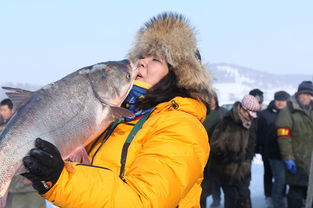Content:
Fishing, an ancient and timeless activity, has always been a source of relaxation and entertainment for many. Whether you are a seasoned angler or a beginner, wild fishing offers a unique and rewarding experience. To make the most out of your fishing adventures, it is crucial to understand the essential techniques and methods for successful angling. In this article, we will delve into the world of wild fishing, providing you with valuable insights and tips to help you become a proficient angler.
Choose the Right Location
The first step to successful wild fishing is selecting the perfect location. Research the best spots in your area, taking into account factors such as water quality, fish population, and accessibility. Popular locations include lakes, rivers, streams, and ponds. Keep in mind that different types of fish prefer different environments, so choose a spot that suits your target species.
Familiarize Yourself with the Local Fish Species
Understanding the local fish species is essential for successful wild fishing. Research the types of fish that inhabit the waters you plan to fish in, and learn about their feeding habits, preferred bait, and behavior patterns. This knowledge will help you tailor your approach and increase your chances of catching fish.
Choose the Right Equipment
Selecting the appropriate equipment is crucial for a successful fishing trip. Here are some essential items to consider:
- Rod and reel: Choose a rod and reel that match the type of fish you are targeting and the type of fishing you plan to do. For example, a spinning rod and reel are ideal for casting lighter lures, while a baitcasting rod and reel is better suited for heavier lures and live bait.
- Line: The type of line you use depends on the fish species and the conditions of the water. Monofilament line is versatile and easy to handle, while fluorocarbon line is nearly invisible to fish and excellent for fishing in clear water.
- Hooks: Choose hooks that match the size and type of bait you are using. Ensure that the hooks are sharp to prevent fish from escaping.
- Bait and lures: Choose bait and lures that are popular with the fish species in your chosen location. Live bait, artificial lures, and natural baits like worms and insects can all be effective.
Learn Basic Fishing Techniques
There are several basic fishing techniques that can help you catch more fish:

- Casting: Learn the proper casting technique to ensure your bait lands where you want it. Practice casting in a controlled manner to avoid spooking fish.
- Trolling: Trolling involves dragging a lure or bait behind a boat at a slow speed. This technique is effective for catching fish that are suspended in the water column.
- Still fishing: This technique involves casting your line and allowing it to sit still in the water. It is best used in areas with little to no current or when fish are inactive.
- Fly fishing: Fly fishing is a specialized technique that involves casting a fly rod and artificial fly to imitate natural insects. It is popular among anglers who enjoy the challenge and beauty of fly fishing.
Adapt to Changing Conditions
Weather, water temperature, and time of day can significantly impact fish behavior. Adapt your approach accordingly. For example, fish may be more active during certain times of the day or in different weather conditions. Pay attention to these factors and adjust your tactics as needed.
Be Patient and Observant
Fishing requires patience and observation. Spend time observing the water and looking for signs of fish activity, such as bubbles, ripples, or fish jumping. Be prepared to wait for the right moment to cast or adjust your approach.
Practice Catch and Release
Responsible fishing involves practicing catch and release when possible. This helps maintain fish populations and preserves the natural environment. Ensure you handle fish gently and use appropriate techniques to minimize stress.
In conclusion, mastering the art of wild fishing involves selecting the right location, understanding local fish species, choosing the appropriate equipment, and learning basic fishing techniques. By adapting to changing conditions, being patient, and practicing responsible fishing, you can increase your chances of success. With these tips and techniques, you'll be well on your way to becoming a proficient angler and enjoying the beauty and tranquility of wild fishing.












